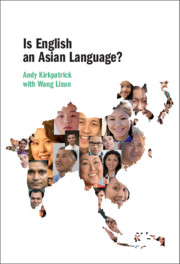Book contents
- Is English an Asian Language?
- Is English an Asian Language?
- Copyright page
- Dedication
- Contents
- Figures and Tables
- Introduction
- 1 How English Came to Asia
- 2 The Asian Corpus of English
- 3 Asian Varieties of English vs English as a Lingua Franca (ELF) in Asia
- 4 What Do Asian Multilinguals Talk about When Using English as a Lingua Franca?
- 5 The Transfer of Features and Communicative Strategies
- 6 Borrowing Words and Writing Asian Englishes
- 7 Non-standard Forms in Asian Englishes and ELF
- 8 English in Law, Religion and Popular Culture
- 9 English as a Language of Education in Asia
- 10 Implications for English Language Teaching in Asia
- 11 Conclusion
- References
- Index
5 - The Transfer of Features and Communicative Strategies
Published online by Cambridge University Press: 15 October 2020
- Is English an Asian Language?
- Is English an Asian Language?
- Copyright page
- Dedication
- Contents
- Figures and Tables
- Introduction
- 1 How English Came to Asia
- 2 The Asian Corpus of English
- 3 Asian Varieties of English vs English as a Lingua Franca (ELF) in Asia
- 4 What Do Asian Multilinguals Talk about When Using English as a Lingua Franca?
- 5 The Transfer of Features and Communicative Strategies
- 6 Borrowing Words and Writing Asian Englishes
- 7 Non-standard Forms in Asian Englishes and ELF
- 8 English in Law, Religion and Popular Culture
- 9 English as a Language of Education in Asia
- 10 Implications for English Language Teaching in Asia
- 11 Conclusion
- References
- Index
Summary
Using empirical data from ACE and from a selection of Asian varieties of English, how local and regional cultural and pragmatic norms are realised in the English being used by Asian multilinguals will be illustrated. We also investigate whether there is empirical evidence for the idea that there is an ‘Asian’ way of communication which is marked or characterised by dialogue and consensus. In an earlier study (Kirkpatrick 2010), fifteen speaker and listener strategies were identified which were adopted by Asian multilinguals while using English as a lingua franca. These findings supported other findings using more European-based data, illustrating that English as a lingua franca is characterised by its speakers’ adoption of specific communicative strategies to ensure successful communication and the preservation of their fellow interlocutors’ face. It will be argued, however, that context is the crucial variable, as there are occasions when speakers, far from seeking to preserve the face of their fellow interlocutors, were happy to threaten their interlocutors’ face.
- Type
- Chapter
- Information
- Is English an Asian Language? , pp. 90 - 110Publisher: Cambridge University PressPrint publication year: 2020

